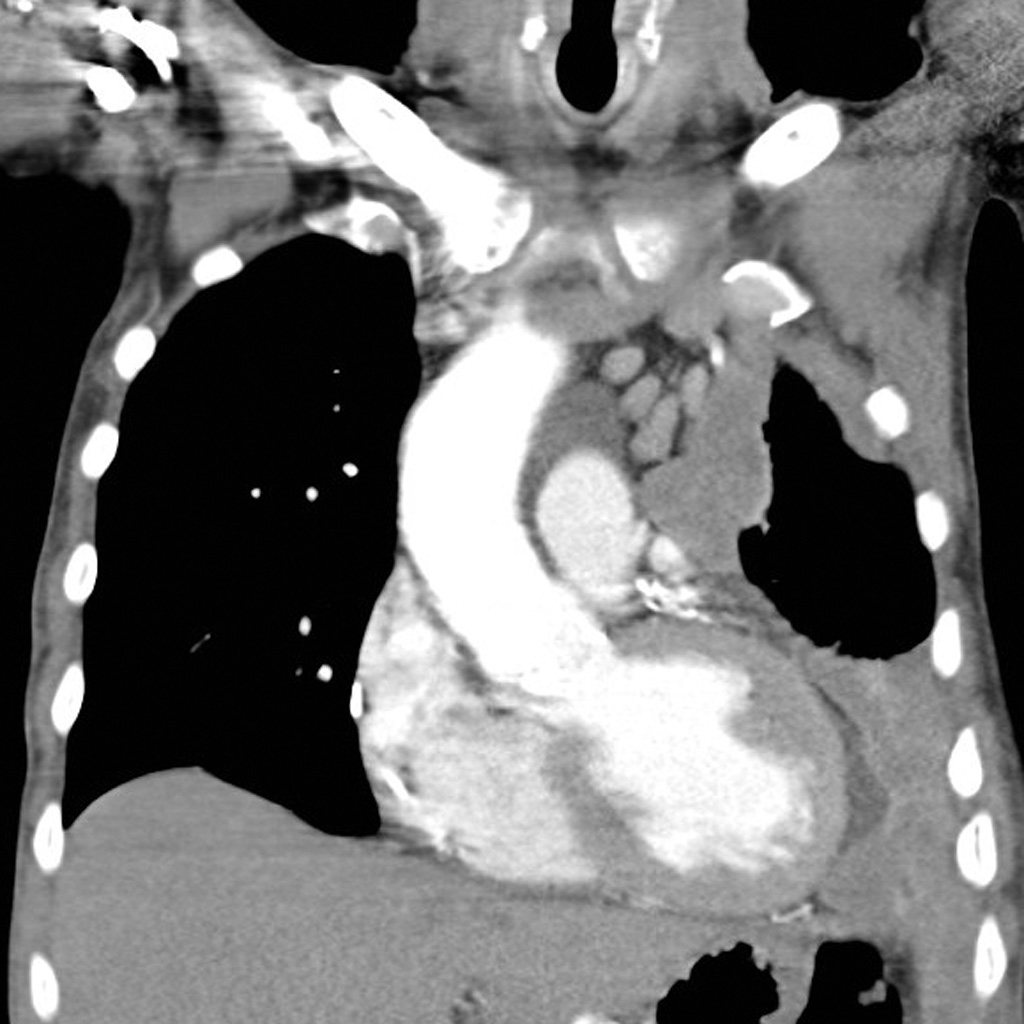Pleural Mesothelioma

Malignant mesothelioma is a fatal asbestos-associated malignancy arising in the lining cells (mesothelium) of the pleural and peritoneal cavities, as well as in the pericardium and the tunica vaginalis.
Epidemiology
The exact prevalence is unknown but it is estimated that mesotheliomas represent less than 1% of all cancers. Its incidence is increasing, with an expected peak in the next 10-20 years.
Clinical description
Pleural malignant mesothelioma is the most common form of mesothelioma. Typical presenting features are chest pain and dyspnea. Breathlessness due to a pleural effusion without chest pain is reported in about 30% of patients. A chest wall mass, weight loss, sweating, abdominal pain and ascites (due to peritoneal involvement) are less common presentations.
Etiology
Mesothelioma is directly attributable to occupational asbestos exposure with a history of exposure in over 90% of cases. There is also evidence that mesothelioma may result from both para-occupational exposure and non-occupational 'environmental' exposure. Idiopathic or spontaneous mesothelioma can also occur in the absence of any exposure to asbestos, with a spontaneous rate in humans of around one per million.
Diagnostic methods
A combination of accurate exposure history, along with examination radiology and pathology are essential to make the diagnosis. The most suggestive CT findings indicating malignant pleural disease are 1) a circumferential pleural rind, 2) nodular pleural thickening, 3) pleural thickening of >1cm and 4) mediastinal pleural involvement.
Differential diagnosis
Distinguishing malignant from benign pleural disease can be challenging.
Management and treatment
Involvement of a multidisciplinary team is recommended to ensure prompt and appropriate management, using a framework of radiotherapy, chemotherapy, surgery and symptom palliation with terminal care. Compensation issues must also be considered.
Prognosis
Life expectancy in malignant mesothelioma is poor, with a median survival of about one year following diagnosis.